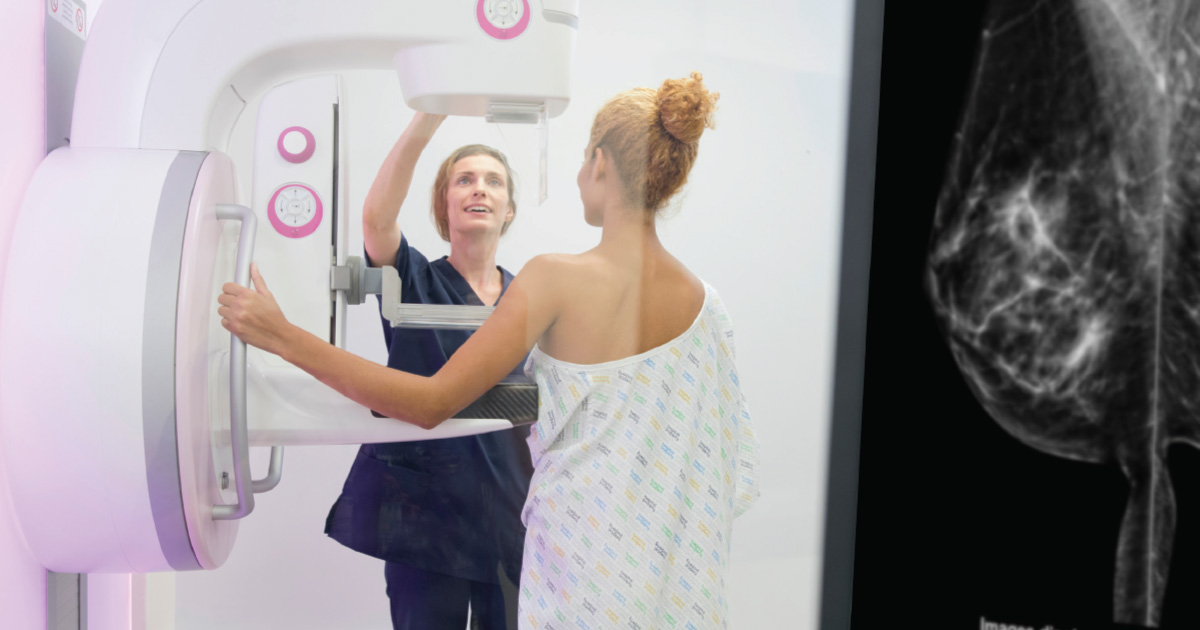
Breast Health
5 Empowering Ways to Support Your Breast Health
There are 2.9 million breast cancer survivors in the United States. If discovered in its earliest stages, chances of surviving breast cancer are promising. Women diagnosed in stage one have a 98% chance of living five years past diagnosis, with many greatly exceeding that statistic and remaining in remission. Here are five ways to stay informed and on top of your breast health.
1. Stay on Top of Mammograms
A mammogram is a low-dose x-ray that allows doctors to look for changes in breast tissue. For women at average risk, meaning you do not have a personal history or strong family history of breast cancer, it’s recommended that you start with a yearly mammogram between age 40 and 44 and through age 75 if you are in good health. Of course, we always recommend speaking with your Axia Women’s Health provider to better understand your risk factors and the best screening plan for you.
We’re here to support you in making caring for you breast health as convenient as possible. Many of our care centers now offer in-suite 3D mammography or are located within a short drive to an Axia Women’s Health mammography center. Click here for more information on our imaging locations.
2. Understand Your Family History
It’s common for breast cancer to run in families. Having a family history doesn’t mean you’re fated to develop breast cancer, but it does mean you are at increased risk. Knowing your family history is important to help you to stay proactive in caring for your breast health.
3. Consider Genetic Testing
If you have a strong family history of breast cancer, it could be due to a gene mutation that runs in your family. Having the gene means you are more likely to get breast cancer than someone who does not. Women with the BRCA mutations (BRCA 1 or BRCA 2 gene) have between a 45-65% increased risk of developing breast cancer before age 70. Through advances in technology, there are now tests available to screen for the BRCA gene mutation. Not only does genetic screening provide answers, but it can help provide options. If detected, your provider can help you develop a proactive plan to reduce your risk of developing breast cancer.
4. Practice Self-Checks
No one knows your body better than you do! Breast self-awareness means being aware of what your breasts look and feel like regularly, so you can be on the lookout for any unusual changes and get them checked out by a doctor. You should touch, look, and check your breasts once a month. There are a variety of ways that breasts can change that could indicate cancer. It’s important to look for everything from lumps, to a change in shape or size, redness, changes to skin texture (i.e., an orange peel-like texture) growing veins, nipple changes, or nipple retraction.
5. Maintain a Healthy Lifestyle
While you can’t alter your genetics, maintaining a healthy lifestyle can reduce your risk of getting breast cancer. It’s important to eat a healthy diet and avoid high-sugar, high-salt, and processed foods as well as to engage in physical activity. Smoking and heavy alcohol use can also increase your risk, and should be avoided.
There are so many things in life we can’t control. We owe it to ourselves and those we love to take charge of the things we can! Find an Axia Women’s Health breast imaging center near you.








